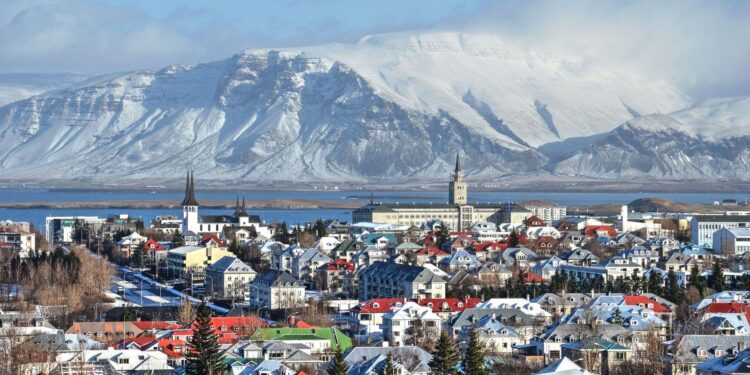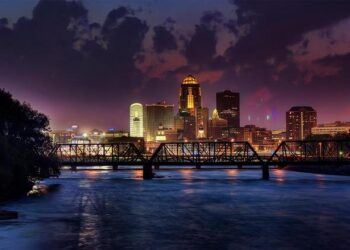Fifteen years after the onset of an unprecedented surge in visitor numbers, Iceland is grappling with the consequences of mass tourism that has transformed its economy, environment, and society. Once a relatively quiet destination, the island nation has become a global hotspot, attracting millions eager to experience its dramatic landscapes and unique culture. Now, as the initial economic euphoria wanes, Iceland faces difficult questions about sustainability, infrastructure strain, and the preservation of its natural heritage. This article examines how the country is reassessing its relationship with tourism and exploring ways to balance growth with long-term resilience.
Iceland Confronts the Environmental and Social Costs of Unchecked Tourism
Over the past decade and a half, Iceland has witnessed an unprecedented surge in visitor numbers, propelling its tourism sector into a major economic force. However, this boom has come at a heavy price. Fragile ecosystems, including the country’s delicate moss-covered lava fields and pristine glaciers, are showing visible signs of degradation. Local authorities report an uptick in soil erosion, pollution in once-pristine natural swims, and overcrowding in popular sites such as the Blue Lagoon and Gullfoss waterfall. Environmentalists argue that these impacts threaten to undermine the very attractions that draw tourists to the island nation.
Beyond nature, the social fabric of Icelandic communities is also feeling the strain. Residents in Reykjavik and other hotspots have expressed concerns over rising property prices, the loss of cultural authenticity, and the overwhelming demand on local infrastructure. The government and tourism operators are now actively considering measures to ensure sustainability, including:
- Visitor caps during peak seasons to reduce overcrowding
- Investment in eco-friendly transportation and waste management
- Community engagement programs aimed at preserving cultural heritage
These strategies aim to balance economic benefits with long-term preservation, acknowledging that unchecked growth could ultimately erode both environmental health and social wellbeing.
Local Communities Push for Sustainable Practices to Preserve Cultural Heritage
Faced with the mounting pressures of mass tourism, local communities across Iceland have mobilized to safeguard not only the natural environment but also the enduring cultural traditions that define their identity. Grassroots initiatives emphasize eco-friendly tourism practices, with an increasing number of villages implementing visitor caps and promoting sustainable transportation alternatives. These measures aim to reduce environmental strain while fostering a deeper connection between tourists and Icelandic heritage, encouraging respect for local customs, folklore, and artisanal crafts.
Organizations and municipal councils are collaborating to invest in educational programs that highlight the importance of responsible travel. Among the strategies promoted are:
- Community-led guided tours that tell authentic stories of Icelandic history and folklore
- Promotion of seasonal events to distribute visitor numbers throughout the year
- Support for local artisans by creating marketplaces for handmade goods, preserving traditional craftsmanship
- Green infrastructure projects such as eco-lodges and sustainable waste management facilities
| Community | Initiative | Impact |
|---|---|---|
| Vík | Visitor cap during summer | 25% reduction in foot traffic |
| √Āsbyrgi | Eco-friendly shuttle buses | 40% decrease in emissions |
| H√ļsav√≠k | Traditional craft market | Boosted local artisan income by 30% |
Experts Recommend Strategic Limits and Diversification to Balance Growth and Conservation
Amid growing concerns over environmental degradation and community strain, Icelandic experts urge policymakers to adopt a balanced framework that restricts unchecked tourism growth while promoting economic sustainability. This approach advocates for strategic visitor caps in vulnerable areas, ensuring that natural landmarks and local ecosystems are shielded from excessive foot traffic. At the same time, diversification of tourism offerings is seen as a critical tool to distribute visitor flow more evenly across the island, alleviating pressure on hotspots like Reykjavik and the Golden Circle.
Key recommendations include:
- Implementing seasonal and regional limits to smooth demand peaks
- Investing in lesser-known destinations to stimulate local economies outside main hubs
- Encouraging eco-friendly transportation alternatives such as electric buses and biking routes
- Engaging local communities in tourism planning to preserve cultural heritage
| Strategy | Impact |
|---|---|
| Visitor caps | Reduced environmental stress |
| Diversified attractions | Economic spread |
| Community involvement | Cultural preservation |
| Sustainable transport | Lower emissions |
In Summary
As Iceland grapples with the long-term impacts of an unprecedented tourism boom, the nation finds itself at a crossroads. Fifteen years after becoming a must-visit destination, concerns over environmental strain, cultural disruption, and infrastructure challenges have prompted calls for a more sustainable approach. How Iceland balances preserving its natural beauty while maintaining its economic vitality will serve as a critical case study for other destinations facing similar pressures in an increasingly globalized travel landscape.
















